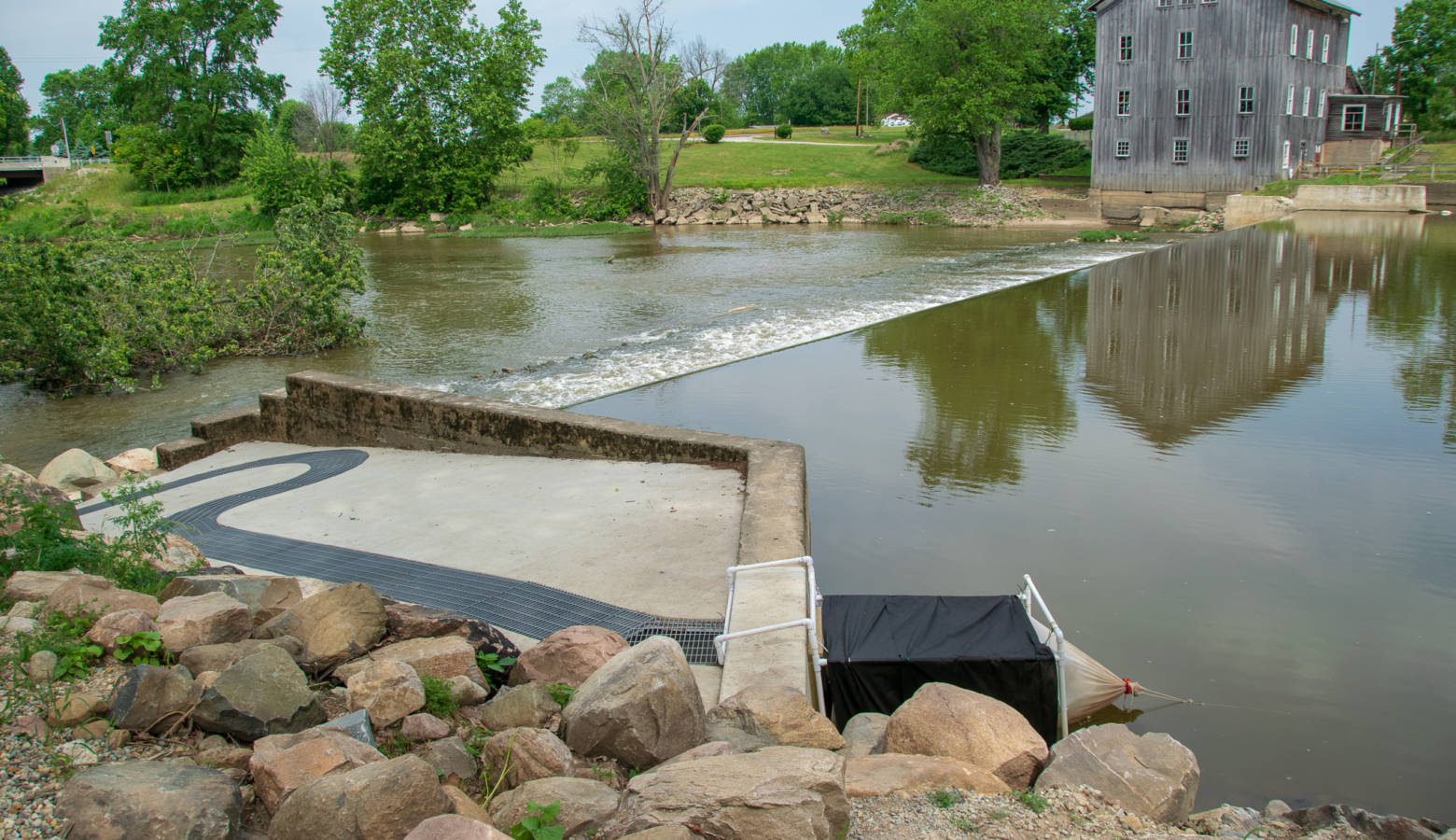What Is A Fish Ladder And How Is It Helping A Hoosier River?

A unique experiment in Roann looks to balance the area’s ecological needs and the history of the community. Indiana Public Broadcasting’s Rebecca Green asks, have you ever heard of a “fish ladder?”
“There’s a standard dam joke that when a fish is swimming up stream and it hits a concrete wall, it says ‘dam’.” That’s just an old dam joke.”
Jerry Sweeten just retired as Manchester University’s director of environmental studies. But his concern over the well being of the area’s fish, and the streams and rivers they swim in continues.
As part of his ongoing efforts, Sweeten works to remove 19th-century low-head dams from waterways such as the Eel River. The dams, while picturesque, can cause great ecological damage.
But the one at the Stockdale Mill in Roann remains due to its historic value to the area. So Sweeten looked for a way to protect the fish.
Now across from the old mill is a very modern fish ladder, one of the first of its kind in the country.

A fish swims around the live trap, awaiting release. The fish will be micro-chipped before it is let go. The trap is checked multiple times a day.
The fish are caught in a live trap, microchipped and their travels recorded via a series of antennae buried under the river in various locations.
In the two months since the fish ladder opened to its unique clientele, the results have been encouraging.
“We have had over 60 percent of the fish species, 34 species of species move through the ladder and up the other side, we have literally thousands of fish we have counted that have made it upstream.”

